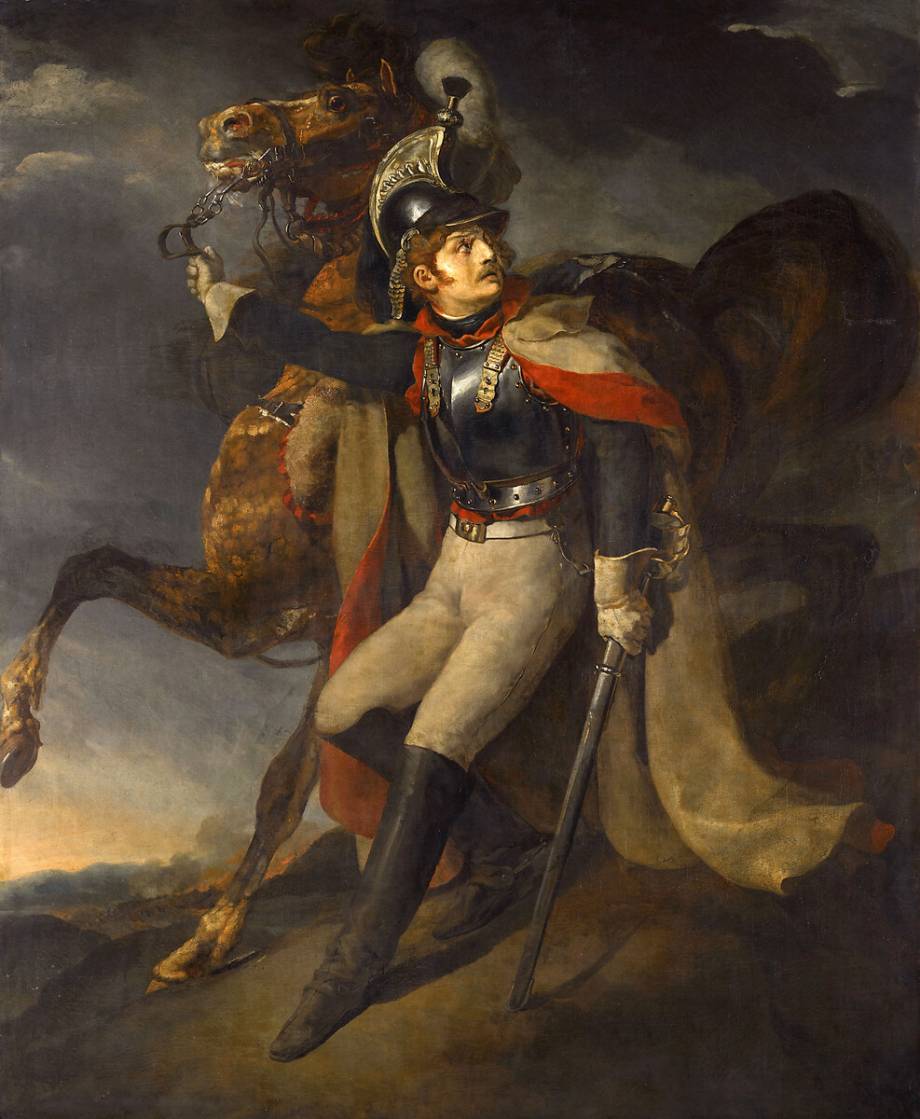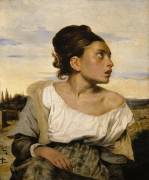Shop art print and framed art Cuirassier blessé quittant le feu by Théodore Géricault
Customise
Your art print
Cuirassier blessé quittant le feu OF Théodore Géricault

Cuirassier blessé quittant le feu
The story of Theodore Géricault's Wounded Cuirassier Leaving Fire
The painting of the Wounded Cuirassier Leaving the Fire is a major work by the French artist Théodore Géricault. Produced in 1814, this 358×294 cm painting in the Romantic style demonstrates Géricault's prodigious skill in composition and aesthetics.
The historical context in which this painting was created is intrinsically linked to the hardships France endured during the Napoleonic Wars. The twilight of these wars saw the birth of a new artistic spirit, seeking to represent the suffering and sacrifices endured by the soldiers.
This painting was a centrepiece among the works exhibited at the Paris Salon de Peinture et de Sculpture in 1814, but its reception was mixed. Some critics praised the realism and energy depicted in the scene depicted, while others criticised the sombre and poignant expression that pervades the work.
The association of this painting with the previous canvas painted by Géricault in 1912, the Officier de chasseurs à cheval de la garde impériale chargeant, gives even more meaning to the canvas, showing the evolution of Napoleonic campaigns, from the victories leading to an empire at its height in 1912, to the defeat during the French Campaign led by the Sixth Coalition against the French Empire in 1914.
Visual description of Wounded Infantryman leaving fire
In this painting, a wounded cuirassier can be seen on his horse, leaving the scene of a battle. The main character is a soldier, wearing the uniform of the French cuirassiers of the time.
Géricault manages to immortalise the moment when this soldier emerges from the battlefield in difficulty, leaning on his sabre to avoid falling. The horse, just as stricken as its rider, also seems to be suffering from this intense situation. The striking realism with which Géricault depicts the details of the costume, the wounds and the tension evident on the protagonist's face testifies to his unparalleled technical mastery.
The predominant dark tones reinforce the dramatic atmosphere that reigns in this composition. The colours used are mainly browns, blacks and greys, creating an impression of gravity and sadness. A few touches of red punctuate the scene to highlight the character and his membership of the French clan.
The impact of Wounded Cuirassier Leaving Fire in the career of Théodore Géricault
Wounded Cuirassier Leaving Fire marks a decisive turning point in Géricault's career. This work highlights his talent for expressing emotions and depicting tormented subjects. From then on, he would continue to explore these complex themes throughout his life as an artist.
This masterpiece gives us a better understanding of Théodore Géricault's stylistic evolution over the course of his career. While his early works were mainly inspired by the classical masters, the Wounded Cuirassier Leaving Fire demonstrates a desire to break away from academic conventions to express a personal and more poignant vision of reality.
This marked the beginning of a shift towards a less formal style, characterised by great expressivity and a poignant realism that would give his future paintings a unique aura.
The artistic legacy of Géricault's Wounded Cuirassier Leaving Fire
Although this painting was not unanimously acclaimed when it was first exhibited, it nonetheless did much to establish Géricault's talent among connoisseurs. Today, it is considered one of the great masterpieces of French painting of the early 19th century.
By depicting this tragic episode in a war that was shaking France at the time, Géricault paved the way for the Romantic artists who would follow, distinguished by their exaltation of emotions and human drama.
The Wounded Cuirassier Leaving Fire will thus remain a true inspiration for future generations of artists
Gustave Courbet would thus be marked by the energy and strength exuded by Géricault's painting, while Eugène Delacroix would take up the themes borrowed from history as well as the dramatic dimension of Géricault's canvases. Édouard Manet, although associated with the Impressionist movement, would also draw his inspiration from Géricault's evocative power and stylistic radicalism
The Wounded Cuirassier Leaving Fire then remains a precious witness to a troubled era and an essential milestone in the evolution of French painting.
This artwork is a painting from the classical period. It belongs to the romanticism style.
« Cuirassier blessé quittant le feu » is kept at Louvre, Paris, France.
Find the full description of Cuirassier blessé quittant le feu by Théodore Géricault on Wikipedia.
You may also like
- 30% !
Make good deals by browsing our Reserve : editions of our catalog which await their purchaser at a low price.























